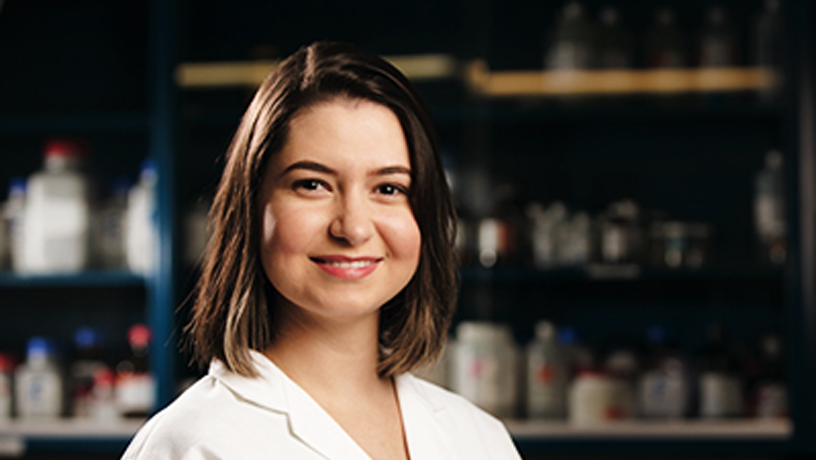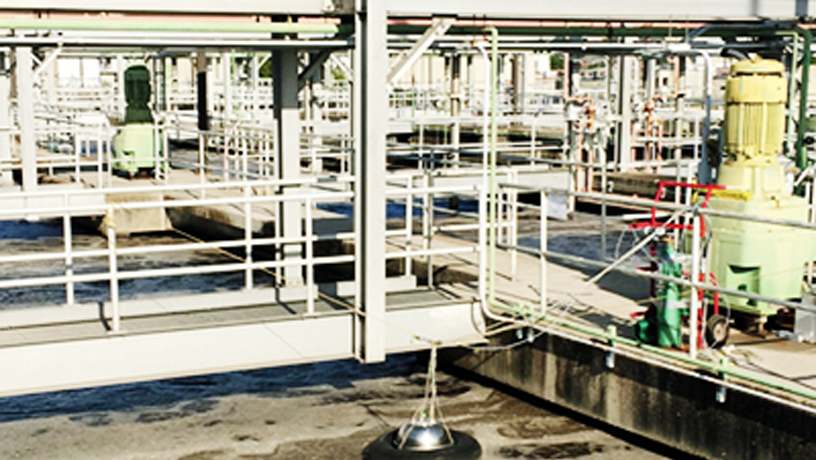Ariane Coelho Brotto | Earth and Environmental Engineering | PhD Candidate
Ariane Coelho Brotto has been unambiguous about her passion for science since childhood. “It was in ninth grade that I had my first chemistry class and I fell in love with it! From then on, I dreamed to be a chemist, and I aimed all my efforts to be the best I could,” she recalls. Currently a PhD student focused in water sustainability solutions in Professor Kartik Chandran’s lab, Brotto is well on her way to achieving that goal.

Ariane Coelho Brotto was recently named the SEAS Class Day Graduate Student Speaker and is set to deliver remarks May 16. (Photo by Jeffrey Schifman)
Brotto now recognizes engineering as a perfect conduit to effect the type of change she understands is needed, but it wasn’t until she was pursuing a master’s degree in geosciences that the native Brazilian began to consider it as a potential educational path. “My interest in coming to Columbia came after reading several papers produced by Professor Chandran’s research group on greenhouse gas emissions from wastewater treatment plants. I was working in a pioneer research project in Rio de Janeiro on the same topic, and I realized that I could potentially extend my knowledge and research even further, especially in the fields of engineering and microbiology.” She wasted no time reaching out to Chandran, and when he responded by encouraging her to apply to Columbia to study earth and environmental engineering, the advice spurred a bit of a revelation.
“I came to realize that engineering would provide me with many more opportunities to impact the world with my research.”
Brotto describes her research as being the interface of three spheres: sanitation, water quality, and the greenhouse gas (referred to as GHG) footprint. She is exploring ways in which we can decrease the emissions of nitrous oxide, a gas 300 times more potent to the environment than carbon dioxide, during wastewater treatment and in doing so decrease their negative impact. “I investigate how the microorganisms in the biological wastewater treatment produce this GHG under certain operational conditions with the goal of developing strategies to mitigate its production and emission through proper process design and operation of the engineered water systems, as well as assessing evidence for new technologies and carbon credits.”
Brotto’s timely research tied in naturally with the School’s most recent design challenge, launched this past December. The initiative quite literally hit home for Brotto, as it focused on urban water problems specifically in Rio. She first heard about the challenge when Eduardo Paes, the city’s mayor, visited Columbia to introduce the Rio Innovation Hub. “On the same day, I contacted the dean’s office of SEAS to demonstrate my interest in contributing to the development and implementation of this new center in my hometown,” remembers Brotto. “Through the Urban Water Design Challenge I see an open door to start my contribution with this innovation, especially as it’s on my field of specialization—water and sanitation.”
Brotto refers to her experience studying under Chandran as “intellectually stimulating and life transforming,” and aspires to bring home her hard-earned expertise. Her goal upon obtaining her doctorate is to use her work at Columbia and expand upon it to improve circumstances in Brazil and beyond.
“I’m hopeful that the results of my research will contribute to substantial changes in the way we deal with wastewater treatment,” she describes, adding with infectious optimism her hope for her research: “That in the next few years our treatment plants will become climate neutral (not only in terms of energy use, but also direct emissions from the biological treatment) while benefiting from having quality water and resources from the wastewater.”

Brotto conducting the GHG monitoring on a Biological Nitrogen Removal Wastewater Treatment Plant
